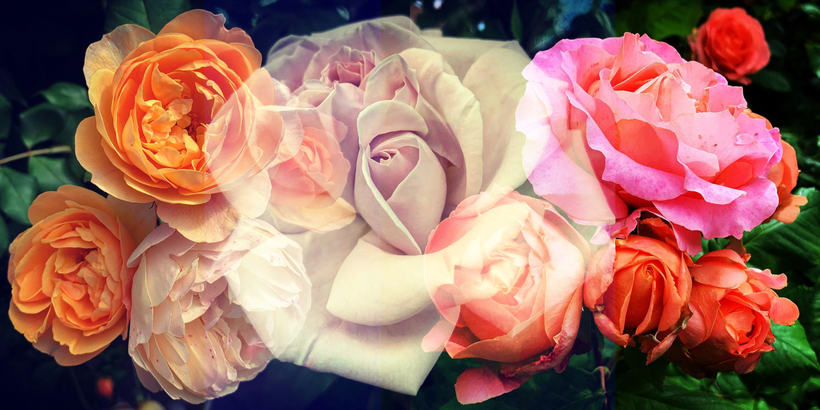“I’m not a collector. I’m an addict!” says Sam McKnight, the hairstylist to Princess Di and Kate Moss who swapped his scissors for pruning shears during the U.K.’s first lockdown.
Years ago, McKnight would take a deck chair and a book into The Regent’s Park on summer evenings. It was there that he discovered the Queen Mary’s Rose Gardens and imagined planting his own. Today, he has nearly 100 varieties growing behind his North London house, of which his favorite is the fittingly named Generous Gardener, a climber of the palest pink. “I need a bigger garden,” he says. “I am at peak rose!”

McKnight joins the ranks of a fanatical rose fan club that stretches back to ancient times, from Sappho in 600 B.C. (“the Rose the Queen of flowers shall be”) to Shakespeare (“of all the flowers methinks a rose is best”) and onward to Empress Joséphine, for whom a deal was struck during the Napoleonic Wars to allow her precious rose cuttings safe passage across the English Channel.
While it’s a stretch to imagine that roses have the power to broker peace (if only … ), their endurance and steadfastness in our affections is causing a current flush. “Peak rose” is unfolding everywhere.
“I need a bigger garden. I am at peak rose!”
Summer is still around the corner, and yet already the rose motif is flowering its way onto the punky leather embroidery of textile artist Tessa Perlow, kitsch stickers at London stationer Choosing Keeping, decorative cardboard cutouts from handbag company Lulu Guinness, and even heeled Parisian clogs.
In every new rose there’s a hint of the roses that have come before it. Take a piece from Rei Kawakubo’s Comme des Garçons spring-summer ’22 men’s-wear show—where roses bloomed from the fabrics and the models wore papier-mâché headpieces—and you can easily trace a line to Cecil Beaton’s surreal fête champêtre jacket with pink muslin roses stitched onto pale corduroy. (Incidentally, the jacket takes center stage at the V&A’s new “Fashioning Masculinities” exhibition.)

Curator Amy de la Haye has become a specialist in this very field, helming the “Ravishing: The Rose in Fashion” exhibition at New York’s Museum at F.I.T. last autumn, where a “Rose Garden of Hats” was displayed alongside rose-covered Gucci suits and Dior evening dresses.
De la Haye’s latest show, “Wild & Cultivated: Fashioning the Rose,” has just opened at the Garden Museum in London. Here the collection is less high fashion and more eclectic. There are Tim Walker photographs and Wedgwood rosebud teacups, Victorian postcards and a jeweled Oliver Messel rose made for the Glyndebourne opera in 1959. It’s random and wonderful and about as charmingly eccentric as an English flower garden itself.
It is, after all, out in the garden that the best roses belong. No replication of a rose can carry the scent of the real flower. It was a scent that obsessed Graham Thomas, the legendary rose breeder whose legacy is carried in the sweet summer air at Mottisfont Abbey, in Hampshire. Now in the care of the National Trust, it’s the top spot in England for roses, according to garden designer Tania Compton. Visit the walled garden there to find her favorite variety, the Queen of Denmark, whose petals unfurl like a Fibonacci spiral.
“A rose has a wildness to it, a freedom,” says Henrietta Courtauld, one half of the Land Gardeners duo. “It is very much its own person.” It will return year after year, despite the conditions thrown at it.
Daisy Allsup is the editor of the newsletter A Little Bird. Her writing has appeared in numerous publications, including CN Traveller and House & Garden

